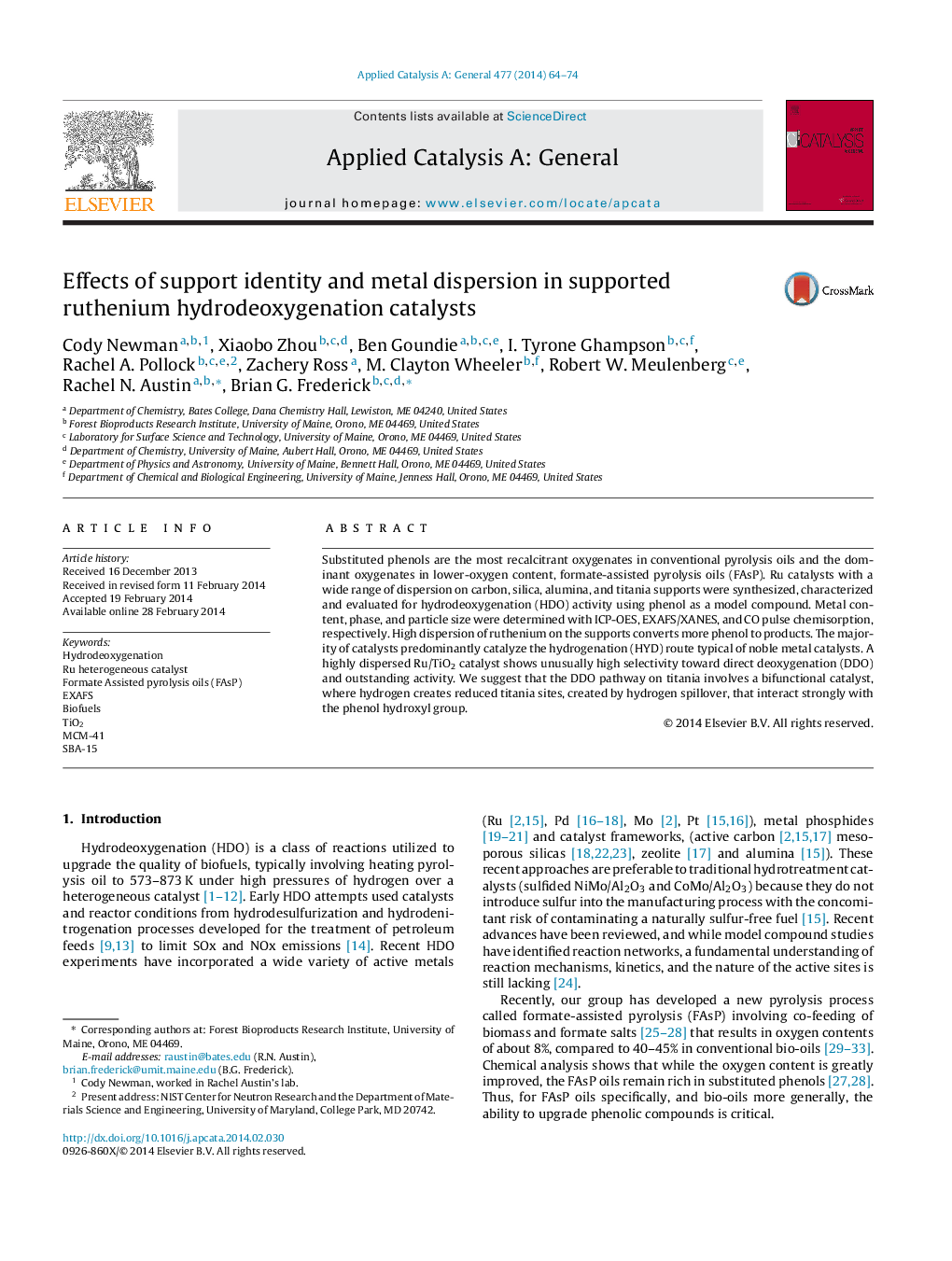| Article ID | Journal | Published Year | Pages | File Type |
|---|---|---|---|---|
| 39708 | Applied Catalysis A: General | 2014 | 11 Pages |
•Large library of heterogeneous ruthenium catalysts on different supports.•Propensity of catalysts to catalyze hydrogenation v. direct deoxygenation studied.•Catalysts thoroughly characterized, including by XAS and EXAFS.•Uncalcined Ru on TiO2 shows highest selectivity for direct deoxygenation.•We report results that give useful guidance in efforts to make efficient HDO catalysts for biofuels upgrading.
Substituted phenols are the most recalcitrant oxygenates in conventional pyrolysis oils and the dominant oxygenates in lower-oxygen content, formate-assisted pyrolysis oils (FAsP). Ru catalysts with a wide range of dispersion on carbon, silica, alumina, and titania supports were synthesized, characterized and evaluated for hydrodeoxygenation (HDO) activity using phenol as a model compound. Metal content, phase, and particle size were determined with ICP-OES, EXAFS/XANES, and CO pulse chemisorption, respectively. High dispersion of ruthenium on the supports converts more phenol to products. The majority of catalysts predominantly catalyze the hydrogenation (HYD) route typical of noble metal catalysts. A highly dispersed Ru/TiO2 catalyst shows unusually high selectivity toward direct deoxygenation (DDO) and outstanding activity. We suggest that the DDO pathway on titania involves a bifunctional catalyst, where hydrogen creates reduced titania sites, created by hydrogen spillover, that interact strongly with the phenol hydroxyl group.
Graphical abstractFigure optionsDownload full-size imageDownload high-quality image (81 K)Download as PowerPoint slide
